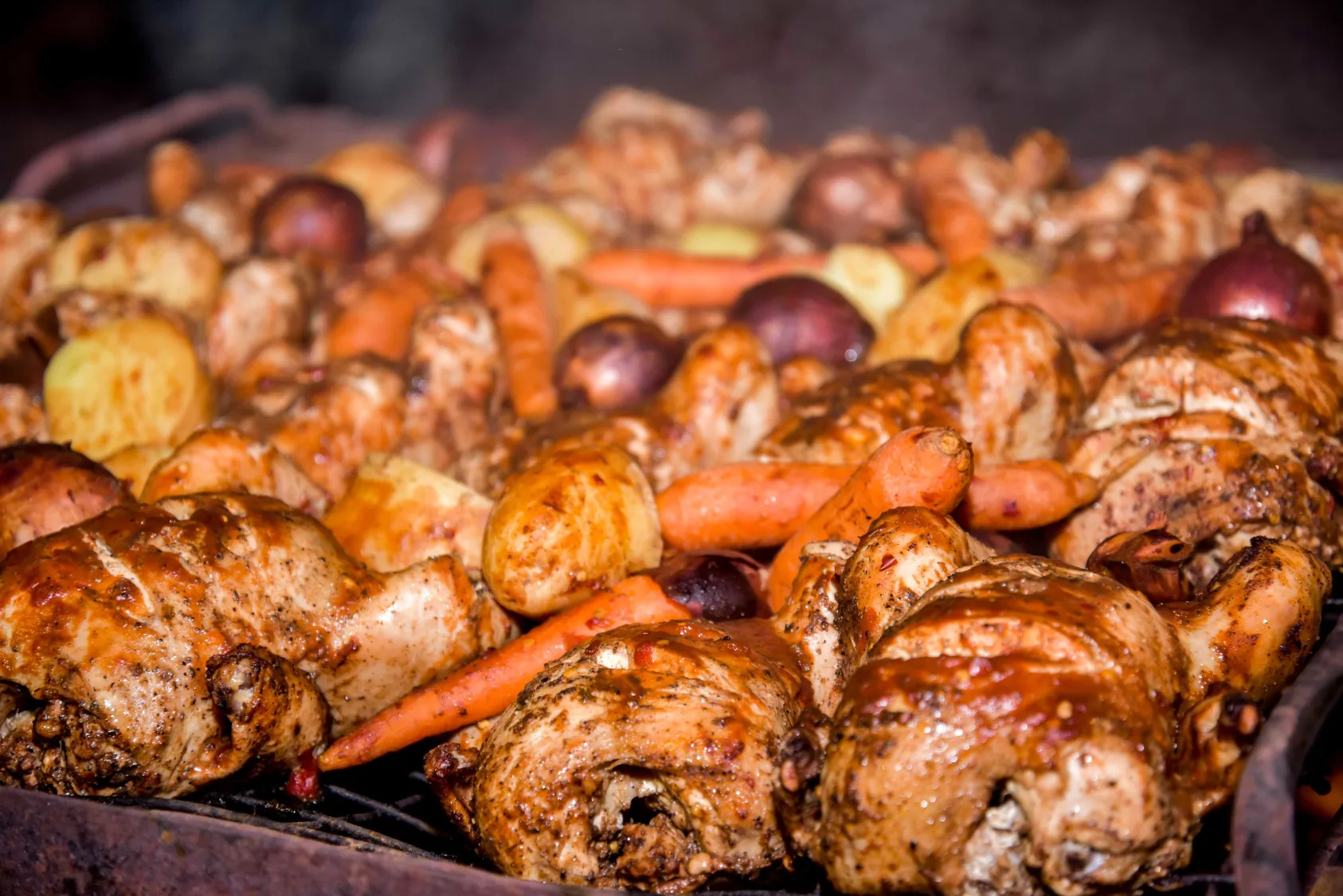
Zarb
Traditional Bedouin dish of meat and vegetables slow-cooked in an underground oven.
Ingredients
- •Lamb or chicken
- •Potatoes
- •Carrots
- •Onions
- •Garlic
- •Middle Eastern spices
- •Bay leaves
- •Olive oil
Instructions
Prepare Oven
Heat underground oven
Season Meat
Marinate meat with spices
Layer Ingredients
Arrange meat and vegetables in tiers
Cook
Slow cook in underground oven
Serve
Remove and serve hot
Zarb is a traditional Bedouin cooking method that has been practiced for centuries in Jordan's desert regions. This unique dish involves slow-cooking meat and vegetables in an underground oven, resulting in incredibly tender and flavorful food infused with smoky aromas.
The history of Zarb is deeply rooted in Bedouin culture, where this cooking method was developed as a practical way to prepare meals in the desert using minimal resources. The underground oven, essentially a hole in the sand, would be lined with wood and stones to create intense heat, perfect for slow-cooking large quantities of food for communal gatherings.
The preparation of Zarb is a labor of love that begins with digging and preparing the underground oven. Wood is burned until it creates hot embers, and stones are heated to maintain consistent temperature. Meanwhile, meat (traditionally lamb or chicken) is marinated with Middle Eastern spices, garlic, and olive oil. The meat and vegetables are arranged in special tiered racks, allowing the juices to drip down and flavor everything below. The entire rack is lowered into the underground oven, which is then sealed with a lid and covered with sand to trap the heat.
While the traditional method requires an underground oven, modern adaptations have emerged for home cooking. Some people recreate similar results using a deep pit in their backyard, while others achieve comparable flavors using a slow cooker or Dutch oven. The key is to maintain low, consistent heat and allow plenty of time for the meat to become tender.
In Jordan, Zarb is more than just a meal - it's a social experience. It's often prepared for special occasions and gatherings, where friends and family come together to share in the anticipation as the food slowly cooks. The unveiling of the Zarb is always a dramatic moment, as aromatic steam escapes when the oven is opened. The dish is typically served on a large communal platter, with the tender meat and vegetables arranged over Arabic rice or bread.
From a nutritional perspective, Zarb can be a relatively healthy dish as it requires minimal added fats and the slow-cooking process helps retain nutrients. The cooking method naturally renders excess fat from the meat while keeping it moist. However, portion control is important as traditional servings can be quite generous. Those with dietary restrictions should note that while the dish is naturally gluten-free (without bread), cross-contamination could occur during preparation. The dish can also be adapted for different dietary needs by varying the choice of meat and vegetables.
